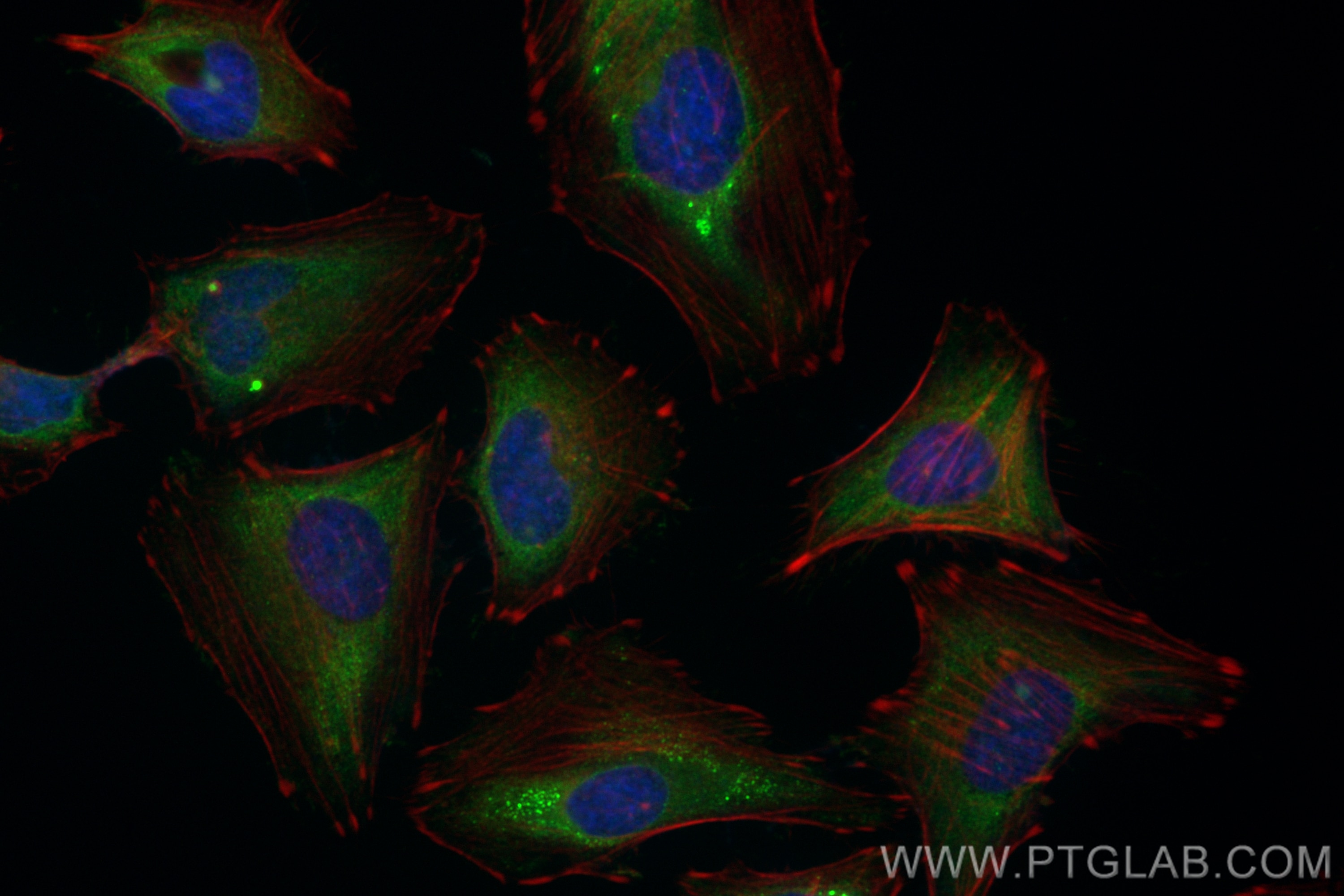Tested Applications
| Positive IF/ICC detected in | HeLa cells |
Recommended dilution
| Application | Dilution |
|---|---|
| Immunofluorescence (IF)/ICC | IF/ICC : 1:50-1:500 |
| It is recommended that this reagent should be titrated in each testing system to obtain optimal results. | |
| Sample-dependent, Check data in validation data gallery. | |
Product Information
CL488-28820 targets WIPI2 in IF/ICC applications and shows reactivity with human, mouse samples.
| Tested Reactivity | human, mouse |
| Host / Isotype | Rabbit / IgG |
| Class | Polyclonal |
| Type | Antibody |
| Immunogen |
CatNo: Ag30505 Product name: Recombinant human WIPI2 protein Source: e coli.-derived, PGEX-4T Tag: GST Domain: 368-454 aa of BC004116 Sequence: ALMKQHRLDGSLETTNEILDSASHDCPLVTQTYGAAAGKGTYVPSSPTRLAYTDDLGAVGGACLEDEASALRLDEDSEHPPMILRTD Predict reactive species |
| Full Name | WD repeat domain, phosphoinositide interacting 2 |
| Calculated Molecular Weight | 49 kDa |
| Observed Molecular Weight | 49 kDa |
| GenBank Accession Number | BC004116 |
| Gene Symbol | WIPI2 |
| Gene ID (NCBI) | 26100 |
| RRID | AB_3672834 |
| Conjugate | CoraLite® Plus 488 Fluorescent Dye |
| Excitation/Emission Maxima Wavelengths | 493 nm / 522 nm |
| Form | Liquid |
| Purification Method | Antigen affinity purification |
| UNIPROT ID | Q9Y4P8 |
| Storage Buffer | PBS with 50% glycerol, 0.05% Proclin300, 0.5% BSA, pH 7.3. |
| Storage Conditions | Store at -20°C. Avoid exposure to light. Stable for one year after shipment. Aliquoting is unnecessary for -20oC storage. |
Background Information
WIPI2, the mammalian homologue of the yeast ATG18 gene, plays a key role in autophagy. It binds the omegasome, a phosphatidylinositol 3-phosphate (PI3P) rich domain of the endoplasmic reticulum from which the mature autophagosome develops. Western blotting detected a 49 kDa WIPI2 band.(PMID: 30968111, PMID: 30403914)
Protocols
| Product Specific Protocols | |
|---|---|
| IF protocol for CL Plus 488 WIPI2 antibody CL488-28820 | Download protocol |
| Standard Protocols | |
|---|---|
| Click here to view our Standard Protocols |




